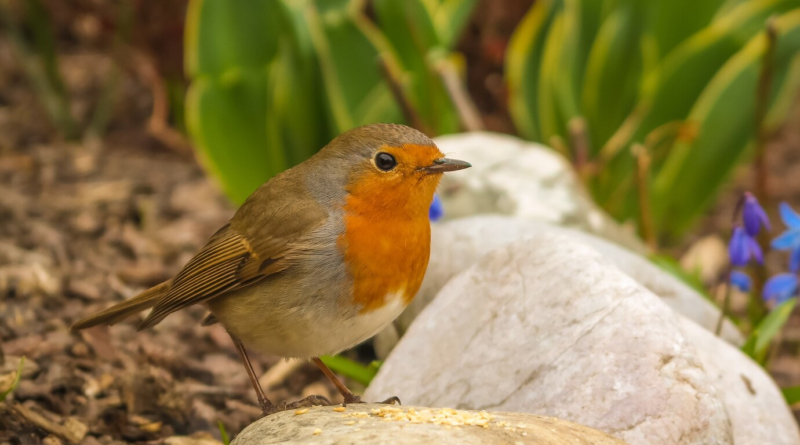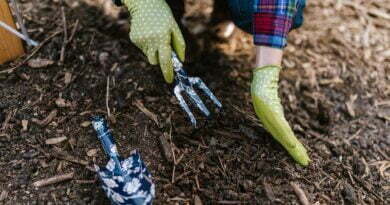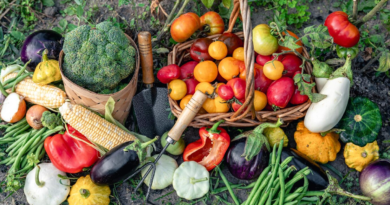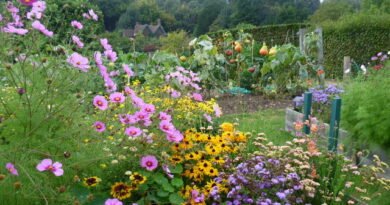Welcoming Wildlife: Autumn Tips for Your Allotment
Autumn brings a sense of magic to the garden, with leaves turning rich shades of gold and the air growing crisp in anticipation of winter. While tending to our plants often takes center stage, it’s just as vital to focus on making our allotments welcoming for wildlife. Encouraging biodiversity creates a healthier ecosystem, benefiting both your garden and the local wildlife. In this post, we’ll explore simple yet effective ways to transform your allotment into a wildlife sanctuary this autumn.
Why a Wildlife-Friendly Allotment?
Creating a wildlife-friendly space is crucial for several reasons:
- Biodiversity: Increasing plant and animal diversity can help stabilise ecosystems and promote resilience against pests and diseases.
- Natural Pest Control: Encouraging natural predators like birds, ladybirds, and lacewings can reduce pest populations, helping your plants thrive without chemicals.
- Pollination: Attracting bees, butterflies, and other pollinators will increase the productivity of your allotment.
- Habitat: Many species are losing their natural habitats due to urbanisation and farming practices. Your allotment can provide shelter, food, and breeding grounds.

Assessing Your Allotment
Before making changes, take a moment to assess your current allotment. Note the existing flora and fauna, the types of habitats present, and areas that could be improved for wildlife. Identifying what species already inhabit your space can help you tailor your efforts effectively.
Creating Habitats for Wildlife
1. Plant Native Species
One of the best ways to attract local wildlife is by planting native plants. These plants are adapted to the local climate and soil, making them more resilient. Native flowers, shrubs, and trees also provide food and shelter for local wildlife.
Recommended Native Plants:
- Wildflowers: Black-eyed Susan, coneflower, and goldenrod.
- Shrubs: Elderberry, serviceberry, and hawthorn.
- Trees: Oak, maple, and birch.
For a comprehensive list of native plants suitable for your area, check out 20 British native wildflowers to grow or consult your local extension service.
Detailed Plant Profiles
- Coneflower (Echinacea purpurea): Known for its striking purple petals and central seed cone, the coneflower attracts butterflies and bees while also offering seeds for birds in the autumn.
- Goldenrod (Solidago): This late-blooming perennial provides nectar for pollinators, especially during late summer and early autumn, making it an essential plant for autumn wildlife.
2. Create a Variety of Habitats
A diverse landscape offers different niches for various species. Consider incorporating:
- Wildflower Areas: Designate a section of your allotment for wildflowers. This will attract bees, butterflies, and other pollinators.
- Dense Shrubs and Hedges: These provide shelter for birds and small mammals. Consider planting thorny bushes like blackberries for additional protection.
- Ponds and Water Features: A small pond can attract frogs, dragonflies, and other wildlife. Ensure it’s shallow and has gently sloping sides for easy access.
3. Provide Food Sources
Providing food for wildlife is crucial, especially as natural food sources dwindle in autumn. Here are some ideas:
- Bird Feeders: Install bird feeders filled with seeds and suet to attract various bird species. Make sure to keep them clean to prevent disease.
- Nectar Plants: Flowers that bloom late in the season, like asters and goldenrod, provide vital food for pollinators before winter.
- Fruit and Berries: Leave some fruit on the trees and bushes for birds and other wildlife to enjoy.

4. Shelter and Nesting Sites
Creating safe shelter for wildlife helps them survive the colder months. Here’s how you can help:
- Birdhouses: Provide nesting sites for birds by installing birdhouses. Different species prefer different types, so consider varying designs.
Building Birdhouses: Step-by-Step Guide
- Gather Materials: You’ll need untreated wood, nails, and a drill.
- Cut the Wood: Follow specific measurements based on the bird species you aim to attract (e.g., a 6” x 6” base for small birds).
- Assemble: Nail the sides to the base, ensuring there is a proper entrance hole size for the species.
- Mounting: Choose a safe location at least 5 feet off the ground, away from predators.
- Maintenance: Clean out old nesting material after the breeding season to encourage return visitors.
- Log Piles: Leave fallen branches or logs in your garden. They serve as habitats for insects, amphibians, and small mammals.
5. Avoid Chemicals
Minimising the use of pesticides and herbicides is essential for a wildlife-friendly garden. Chemicals can harm beneficial insects and disrupt the ecosystem. Instead, consider natural pest control methods:
- Companion Planting: Some plants can deter pests naturally. For instance, marigolds can repel nematodes, and basil can deter flies.
- Natural Predators: Encourage birds and beneficial insects to control pests by providing food, water, and shelter.

Seasonal Considerations
As autumn progresses, your wildlife-friendly efforts may need adjustments:
1. Prepare for Winter
- Leave Some Areas Untouched: Avoid cleaning up every part of your allotment. Leaving seed heads, dried plants, and dead wood can provide food and shelter for wildlife through the winter.
- Mulch: Applying a layer of mulch can protect the soil and provide habitat for small creatures. It also helps retain moisture.
2. Water Sources
Ensure water is available for wildlife, even as temperatures drop. You can do this by:
- Creating a Small Water Source: Install a birdbath and keep it filled with fresh water.
- Breaking Ice: During colder months, check your water features regularly and break any ice that forms to provide access for wildlife.
Engaging the Community
Encouraging wildlife in your allotment can inspire others in your community. Consider organising events or workshops to share your knowledge:
- Garden Tours: Host a tour to show how your allotment supports local wildlife.
- Workshops: Teach others how to build insect hotels or birdhouses.
Creating a wildlife-friendly allotment in autumn not only benefits local fauna but also enriches your gardening experience in numerous ways. Engaging with the natural world transforms your allotment from a simple plot of land into a vibrant ecosystem teeming with life. When you actively invite wildlife into your garden, you foster a sense of wonder and connection with nature, making your time spent gardening more fulfilling and enjoyable.
By implementing these strategies, you’ll be promoting biodiversity, which is essential for the resilience of local ecosystems. Biodiversity helps maintain soil health, regulate pests naturally, and supports pollination—key factors that enhance your garden’s productivity. A diverse environment ensures that various species thrive, creating a balance that benefits all living organisms in your allotment. For instance, by attracting pollinators like bees and butterflies, you can increase the yield of your crops, while predatory birds and insects will keep pests at bay, reducing the need for chemical interventions.

Moreover, contributing to the health of the environment extends beyond your garden. By creating habitats for local wildlife, you’re playing a part in the larger ecological framework. As urbanisation and habitat destruction continue to threaten biodiversity, every little effort counts. Your allotment can serve as a sanctuary for various species, from bees and butterflies to birds and small mammals, providing them with essential food and shelter. In this way, you’re not only enhancing your own space but also supporting the overall health of your local ecosystem.
Additionally, embracing wildlife gardening can foster a greater appreciation for the environment among your family and friends. Sharing your knowledge and experiences can inspire others to adopt similar practices in their gardens, creating a ripple effect that promotes environmental stewardship within your community. Consider organising workshops or informal gatherings to share tips on wildlife gardening and the benefits it brings. Collaborating with neighbours can lead to community projects, such as creating wildflower patches or installing birdhouses in shared spaces, further enriching the local habitat.

For more tips and ideas on creating a wildlife-friendly garden, check out these additional resources:
- RSPB: Garden Wildlife: The Royal Society for the Protection of Birds provides valuable insights on attracting and supporting wildlife in your garden.
- The Wildlife Trusts: How to Create a Wildlife-Friendly Garden: The Wildlife Trusts share practical advice and inspiring ideas to help you make your garden a welcoming space for wildlife.
By making these small changes, you can create a thriving habitat that supports wildlife during the chilly months ahead. Every action, no matter how small, contributes to a greater cause preserving the planet and its diverse inhabitants. So, as you prepare your allotment for winter, remember that your efforts not only nurture your plants but also enrich the lives of the creatures that share this earth with us. Embrace the opportunity to make a difference, and enjoy the countless rewards that come from fostering a wildlife-friendly space, happy gardening!




